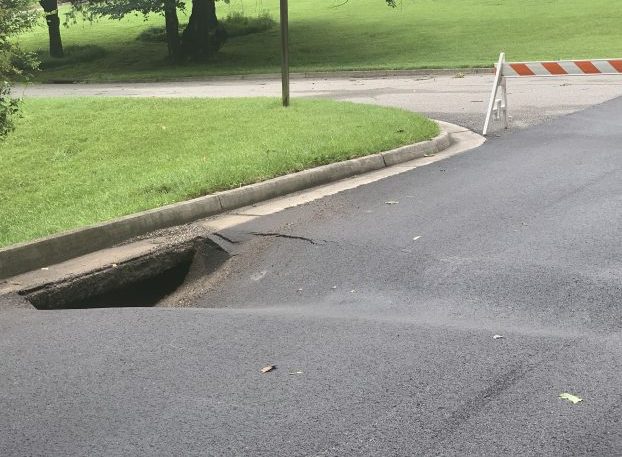A tale of a swale
Published 10:09 am Thursday, September 13, 2018

- The mini excavator is working on the first of several ditches that will eventually become French drains and a swale.
Generally, I don’t get involved in moving earth to change the lay of the land when I garden. If there are hills, flat areas and a few low spots, I just work around them. I might add steps down a hill, but not much more. It’s too complicated.
The garden at the farm, however, is another situation. There are drainage issues that threaten the house. Over the years, the slope of much of the back lawn has shifted so that it drains toward the house rather than away from it. The driveway and the steps from it to the back gate are serving as a conduit for heavy rain. The result: water creeping onto the back veranda and threatening the mud room. There is also a nearby area that is perpetually muddy, just what you need if you have two large dogs.
I tried simple fixes – rerouting gutters from the back of the house to the side, moving a slate path that might be encouraging water to flow where I didn’t want it, even adding more soil near the foundation of the house – but nothing really solved the problem. So…I’ve done the unthinkable and decided to modify the lay of the land. After consulting with an engineer who specializes in water-related issues, I decided to add two French drains and to build a swale.
Trending
While the French drains are unobtrusive, the swale is obvious. It’s sort of like a rain garden, but longer than it’s wide and with one side higher than the other. Think fancy ditch to be precise. I brought in a mini excavator and cut down the hill from the gate through most of the backyard. The result is a wide, but relatively shallow ditch that meanders through the yard and gets narrower as it goes downhill to the creek. The side of the swale facing the house is slightly higher than the opposite one. We filled the swale with crushed slate because it’s attractive and tends to stay where it’s placed. With its curves and irregular width, the finished swale looks like a Japanese style stone river or a wide path. Well, maybe in my dreams. It looks a bit raw at the moment; not a good fit for my gardening style, but that can be fixed.
I suppose I could have dug the swale by hand, but working with rocky red clay isn’t easy. The mini excavator accomplished in several hours what would have taken me the rest of the summer. Yes, there are some gashes in the grass and some small new plants were smashed, but I’m happy to have the swale roughed in. If it works, then I can take care of cosmetic issues and integrate it into the overall design of the garden. Because it’s shallow, I can add plants capable of dealing with fluctuating levels of moisture and that will result in a river color rather than just rocks.
In the meantime, I’m waiting for a heavy rain and making lists of plants for next spring. The project isn’t finished, but I hope it has accomplished its main purpose. A gardener’s work is never done and that’s just fine with me.
CYNTHIA WOOD is a master gardener who writes two columns for The Herald. Her email address is cynthia.crewe23930@gmail.com.





